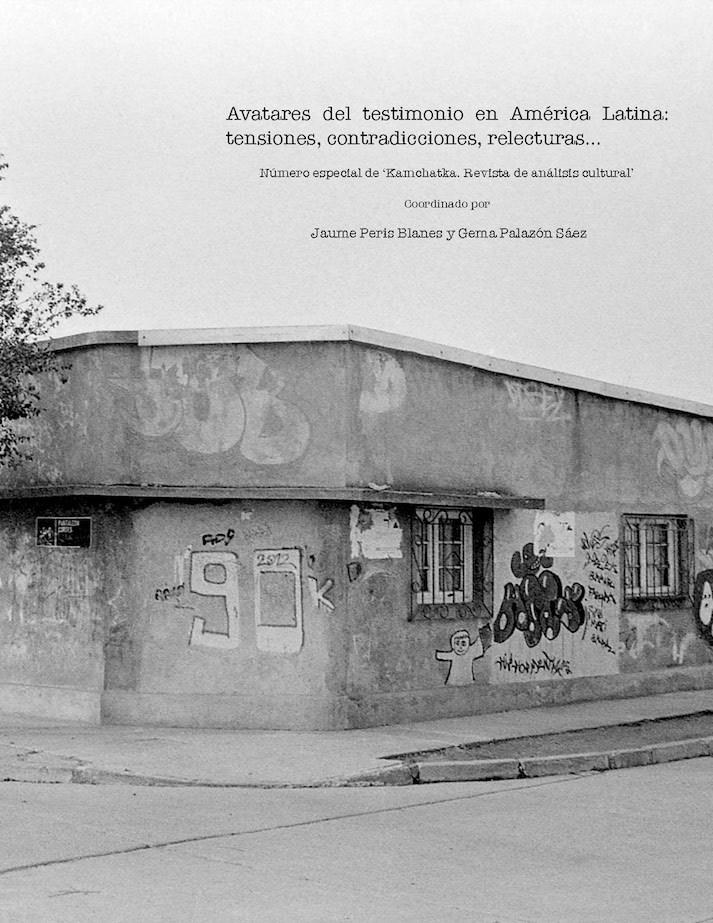Tiene [la] palabra la víctima pura [?]. El vacío social, el testimonio y la desesperación del investigador ante el sufrimiento sin forma ni lenguaje
DOI:
https://doi.org/10.7203/KAM.6.7544Keywords:
víctima, testimonio, sociología Abstract
Abstract
Resumen: A partir de una revisión de propuestas pasadas sobre la vida social en zonas alejadas de los sentidos normativos sobre la vida social ordinaria, el texto traza un recorrido que pasa por las tensiones entre representación y realidad, el testimonio y la víctima. En el límite, propone una figura teórica:?la víctima pura, una suerte de doliente sin voz y plantea algunas dudas sobre las posibilidades reales de hacer investigación social sobre ella.
Palabras clave: Víctimas, testimonio, representación, vacío social.
Abstract: From a revision of past proposals about life in distant areas from the normative senses about everyday social life, the text traces a way from the tension between representation and reality, the testimony and the victim. At the limit suggests a theoretical figure: the pure victim, a kind of mourner without voice. It lays out out some questions about the real possibilities of making social investigation about her.
Key words: Victims, Testimony, Representation, Social Vacuum.
 Downloads
Downloads
 References
References
Bibliografía Agamben, G (1998). Homo sacer. Valencia: Pre-Textos Agamben, G (2002). El archivo y el testigo. Valencia: Pre-Textos. Barel, Y (1982). La marginalité sociale. París: PUF. Barel, Y (1984). La société du vide. París: Seuil. Biehl, J (2005). VITA: Life in a Zone of Social Abandonment. Berkeley: University of California Press. Butler, J (2006). El poder del duelo y la violencia. Buenos Aires: Paidós. Butler, J. “Mourning becomes the law”. Letter from Judith Butler, Paris, Saturday 14th November (2015). Castillejo, A. “Voces (en la cabeza): espacialidad, confesión y las mediaciones tele-tecnológicas de la verdad.” Papeles del CEIC (2013): 1-42. Conadep (1984). Nunca más: Informe de la Comisión Nacional sobre la Desaparición de Personas. Buenos Aires: CONADEP. Das, V (2008). Sujetos del dolor, agentes de dignidad. Bogotá: Pontificia Universidad Javeriana. Das, V., Kleinman, A y Lock, M (1997). Social suffering. Berkeley: University of California Press. Dodier, N. “Représenter ses actions”, Raisons Pratiques 1 (1990). Gatti, G (2002). Las modalidades débiles de la identidad. Sociología de la identidad en los territorios vacíos de sociedad y de sociología. El caso del aprendizaje de euskera por adultos. Leioa: Universidad del País Vasco (serie “Tesis doctorales”). Gatti, G. “Las modalidades débiles de la identidad. De la identidad en los territorios vacíos de sociedad (y de sociología)”. Política y Sociedad, 40/1 (2003): 87-109 Gatti, G. 2005. “La teoría sociológica visita el vacío social (o de las tensas relaciones entre la sociología y un objeto que le rehúye)”. A. Ariño (coord.), Las encrucijadas de la diversidad cultural. Madrid: CIS Gatti, G (2008). El detenido-desaparecido. Narrativas posibles para una catástrofe de la identidad. Montevideo: Trilce. Gatti, G (2014a). Surviving forced disappearance in Argentina and Uruguay. Identity and Meaning. Nueva York: Palgrave MacMillan. Gatti, G. “Como la [víctima] española no hay (Pistas confusas para poder seguir de cerca y entender la singular vida de un personaje social en pleno esplendor)”. Kamchatka: revista de análisis cultural 4 (2014b): 275-292. Gatti, G. “’Lo nuestro, como en Argentina’. Humanitarian Reason and the Latin Americanization of Victimhood in Spain”. Jounal of Latin American Cultural Studies (2016): 25-1 Grierson, K. “Indicible et incompréhensible dans le récit de déportation”. La Licorne (1999) : 51 Mate, R (2003). Memoria de Auschwitz. Madrid: Trotta. Otto, R (2000). Lo santo. Madrid: Círculo de Lectores. Schlanger, J (1983). Penser la bouche pleine. París: Fayard. Spivak, G. “¿Puede hablar el subalterno?”. Revista colombiana de antropología 1 (2003): vol.39
Downloads
Published
How to Cite
-
Abstract1713
-
Artículo (Español)847
Issue
Section
License
This journal provides an immediate free access to the content on the principle that freely make investigation available to the public, which promotes an increased global knowledge exchange.
Unless otherwise indicated, texts published in this journal are under the license Attribution-NonComercial 4.0 by Creative Commons. These texts may be copied, distributed and publicly communicated whenever the publication’s author and title are quoted and whenever they are not used for commercial purposes. In any case, intellectual property of the articles and its potential economic rights entirely belong to its authors.
The full license can be consulted on https://creativecommons.org/licenses/by-nc/4.0/. We encourage authors to disseminate papers published in Kamchatka. Journal of cultural analysis electronically, in institutional digital repository or in their websites.





